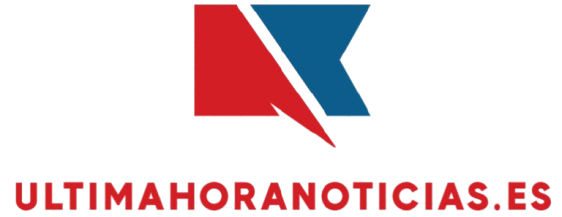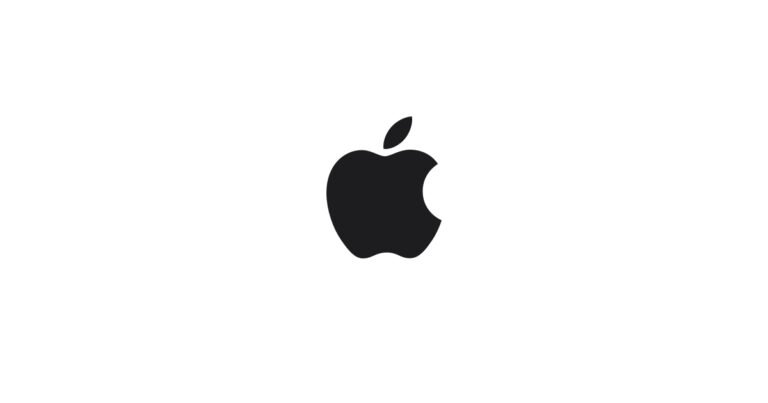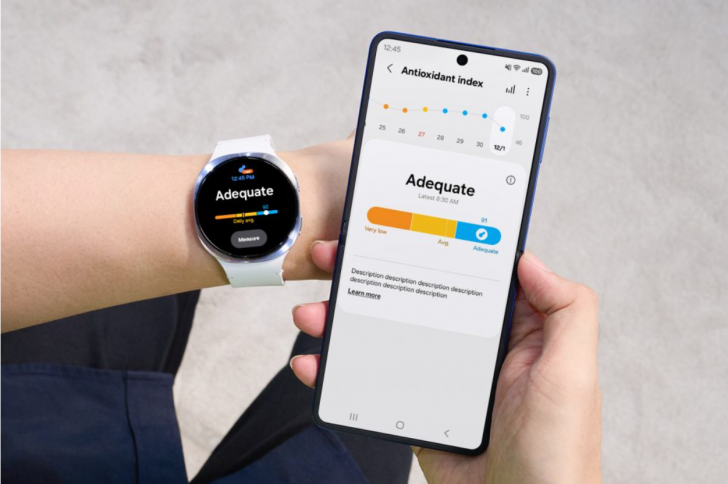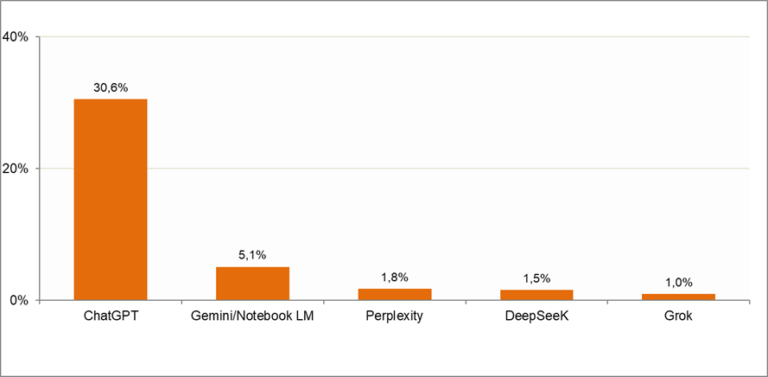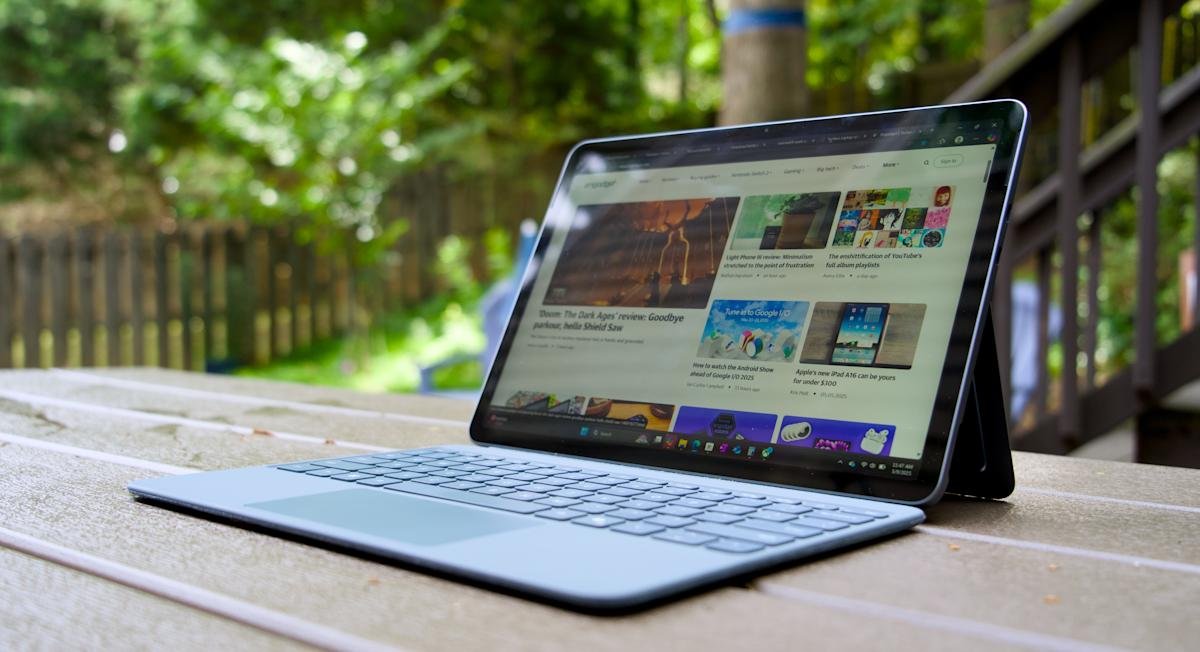
The 12-inch Surface Pro from Microsoft is the most iPad-like hybrid tablet they have created so far. However, in order to achieve this, the company had to make several compromises. Weighing in at 1.5 pounds, it is almost the same weight as the 12.9-inch iPad Pro, and its 7.8mm thickness makes it the thinnest Surface ever. Despite these improvements, it is running a slower processor than last year’s 13-inch Surface Pro and has a subpar screen. Additionally, the keyboard, which is sold separately for $149, does not have an ergonomic typing angle.
Is all of this worth it for a more compact $800 Surface Pro? It depends on your needs. If you are looking for an extremely light Windows tablet that can also function as a 12-inch laptop, then the Surface Pro is a good choice. However, it comes with its fair share of compromises. Like the ASUS ZenBook A14, it is lightweight and thin but lacks in certain areas.
The Surface Pro 12-inch is a smaller and cheaper version of the 13-inch model. It is powered by Qualcomm’s eight-core Snapdragon X Plus, allowing for a more compact design. The device is fan-less, making it silent but potentially causing heat issues in warm environments. The screen has been downgraded compared to the 13-inch model, with a lower resolution and refresh rate. The lack of a magnetic Surface Connect charging port is another drawback, as users must now charge the device using USB-C ports. Microsoft also offers a new 12-inch Surface Pro keyboard to accompany the device. Microsoft continues to offer consumers a «choice» by charging an extra $150 for the Surface Pro keyboard, despite the fact that it should be bundled with the device. This pricing strategy allows Microsoft to market an $800 Surface Pro, but it is seen as a deceptive and anti-consumer practice that undermines the credibility of the Surface lineup. The company’s refusal to comment on the possibility of third-party keyboards for the Surface further adds to the frustration for consumers. Por ahora, estamos en una situación extraña donde tanto los modelos de 12 pulgadas como de 13 pulgadas se están vendiendo por $800.
¿Una consecuencia de todo esto? Microsoft podría estar liquidando su stock existente de modelos base de 13 pulgadas, por lo que eventualmente tu opción más barata sería la configuración de $1,400 (que actualmente está en oferta por $1,030).

Conclusión
El Surface Pro es ligero, delgado y podrá mantenerse al día con la mayoría de tus tareas básicas de productividad. También es increíblemente adorable, tanto que probablemente no te importará que tenga un rendimiento mediocre y una pantalla inferior al modelo de 13 pulgadas. Microsoft finalmente ha diseñado una PC Surface que realmente se siente como un iPad, y para algunas personas, eso solo ya es motivo suficiente para comprarlo.
However, the 12-inch Surface Pro may not be the best choice for serious photo or video editing due to its size and resolution limitations. Additionally, it lacks a magnetic Surface Connect charging port, requiring users to charge it through one of its two USB-C ports. Microsoft only includes a USB-C cable in the box, leaving users to provide their own AC adapter. While Microsoft offers a 45W Surface USB-C charger for $70, there are more affordable and powerful options available.
Furthermore, Microsoft has introduced a new 12-inch Surface Pro keyboard, which is not included with the device and must be purchased separately for $150. This marketing strategy of offering the keyboard as an optional accessory rather than bundling it with the device may seem deceptive and anti-consumer.
Despite these drawbacks, the 12-inch Surface Pro is lightweight, portable, and suitable for basic tasks. It may not offer the same level of performance as larger laptops, but its compact size and ease of use make it convenient for on-the-go productivity. The Surface Keyboard is comfortable to type on, and the optional Surface Slim Pen provides additional functionality for tasks like note-taking and drawing.
In terms of performance, the 12-inch Surface Pro delivers decent results for everyday tasks but falls short in more demanding applications and gaming. It is best suited for light productivity work and casual browsing rather than intensive use. The device’s battery life is adequate for a full workday, though it may not reach the 16-hour mark as claimed by Microsoft.
Overall, the 12-inch Surface Pro offers a compact and portable solution for basic computing needs, but users should be aware of its limitations when it comes to more demanding tasks. In our testing, the 13-inch model ran for 12 hours and 15 minutes in PCMark 10.
The Surface Pro 12-inch is the most iPad-like hybrid tablet Microsoft has made yet, but to get there, the company had to make plenty of compromises. Clocking in at 1.5 pounds, it weighs almost the same as the 12.9-inch iPad Pro, and its 7.8mm thickness also makes it the thinnest Surface ever. But it’s also running a slower processor than last year’s 13-inch Surface Pro and is stuck with a far worse screen. Its keyboard, which is once again sold separately for $149, also doesn’t angle up for ergonomic typing.
So was all of that worth it for a more compact $800 Surface Pro? It depends on what you’re looking for. If you’ve been hankering for an incredibly light Windows tablet that can occasionally transform into an adorable 12-inch laptop, the Surface Pro is a success. Just don’t expect too much from it. Much like the ASUS ZenBook A14, its weight and thinness are notable, yet it’s also chock full of compromises.
The Surface Pro 12-inch is basically a shrunken version of the 13-inch model: It’s a half-pound lighter and 1.5mm thinner. Hence, the iPad comparison. In your hands, it feels a lot more like a genuine tablet, whereas previous Surface devices have always felt a bit clunky, as if they were laptops shoved into a slate-like case (which, admittedly, they were).
Qualcomm’s eight-core Snapdragon X Plus is the major driving force behind this redesign. As a low-power Arm chip, it allowed Microsoft to build a more compact tablet, rather than sticking with its older cases, which had to support hotter Intel chips. Even the 13-inch Surface Pro from last year, which also used Qualcomm hardware (the 10-core Snapdragon X Plus and 12-core X Elite), didn’t deviate much from earlier Intel models. Similar to the MacBook Air, the fan-less design of the 12-inch Surface Pro may be problematic in warm environments. While it ensures a silent operation, fan noise hasn’t been a major issue in other modern ultraportables. The downgrade in screen quality on the smaller Surface Pro, with no OLED option and a lower maximum refresh rate and resolution compared to the 13-inch model, may not be ideal for tasks like photo or video editing. Furthermore, the absence of a magnetic Surface Connect charging port and the need to charge via USB-C, as well as the requirement to purchase a separate AC adapter, are also drawbacks.
Microsoft’s decision to offer the 12-inch Surface Pro without a bundled keyboard, requiring customers to pay an additional $150 for the accessory, is seen as a deceptive practice that is not consumer-friendly. The performance of the 12-inch Surface Pro, while adequate for typical tasks, doesn’t match up to the speed of the Snapdragon X Ultra-powered 13-inch model or the Apple M1-powered MacBook Pro. However, its portability and lightweight design make it a convenient option for on-the-go work. The new Surface Keyboard is responsive and pleasant to type on, and the option to use the Surface Slim Pen for stylus input is available. The 12-inch Surface Pro’s performance in benchmarks reflects its lightweight nature compared to other systems, but it comes at a more affordable price. Ultimately, the 12-inch Surface Pro offers a decent experience for basic tasks, but may not be the best choice for more demanding users. Both the 12-inch and 13-inch Surface Pro models are poor 3D performers, with some of the lowest 3DMark Wildlife Extreme scores seen in years. Given the size and weak hardware of the 12-inch Surface Pro, gaming expectations should be low. Cloud streaming is the best option for this system, as it allows for smooth streaming of games like Halo Infinite via the Xbox app. However, popular titles like Fortnite and Overwatch 2 won’t even launch on the Surface Pro due to its Arm architecture.
Testing the battery life of the Surface Pro using PCMark 10 resulted in strange software errors, but real-world performance showed that the battery reached 53% after eight hours of benchmarking and had about 30% left after a full workday. Microsoft claims the 12-inch Surface Pro should last 16 hours, while the 13-inch model ran for 12 hours and 15 minutes in PCMark 10.
The 12-inch Surface Pro is more of a heart purchase than a brain purchase, as the 13-inch model offers better performance and value. Microsoft’s pricing strategy can be confusing, with both models currently selling for $800. There is speculation that Microsoft is clearing out stock of the base 13-inch model, which may lead to the $1,400 configuration becoming the cheapest option.
In conclusion, the Surface Pro is a lightweight and adorable device that is suitable for basic productivity tasks. While it may have subpar performance compared to the 13-inch model, its design makes it feel like an iPad and may appeal to those looking for a portable Windows PC. Please rewrite the following sentence:
«The dog eagerly chased after the ball in the park.»
«The ball was eagerly chased after by the dog in the park.» Please write it again.
FUENTE
